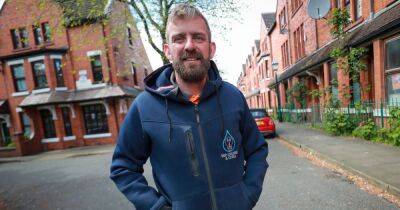Are wind droughts a threat to the booming North Sea wind power industry?
Several EU countries are implementing ambitious plans to turn the North Sea into a green energy powerhouse. But what will happen if global warming causes wind speeds to drop?
Esbjerg in Denmark is at the epicentre of Europe’s offshore wind energy boom.
Lying on the North Sea coast, the scale of what’s happening to the port is truly epic. That’s because the EU is not only pushing for renewables like wind, so it can deliver on its climate promises, it’s also racing to wean itself off Russian hydrocarbons.
"The demand is exploding and looking forward we already know now that in 2025 we are sold out," says the port's Chief Commercial Officer Jesper Bank. "The ambitions by the governments, by the big energy companies are there. We know there is the demand for offshore wind. And that’s very steady for the next eight, 10 years."
It’s not hard to guess why the North Sea has been chosen. It’s one of the windiest places on earth. By the end of this decade, the goal is for offshore wind to generate 65 gigawatts – that’s the equivalent of 30 nuclear reactors.
But what happens when the wind speed drops? And is global warming causing so-called wind droughts to happen more often?
"Climate change definitely can have an impact on wind variability," says Matti Juhani Koivisto, Senior Researcher at DTU Wind and Energy Systems. "There’s a lot of uncertainty, we should say, between the models. But they seem to show a slight increase in variability, especially a bit more wind droughts."
The UK and Ireland experienced well below-average wind speeds between July and September 2021 as the areas in this map in blue show.
If repeated this year, how might that impact our energy security?
“We are prepared for them already now," says Koivisto. "Because we








